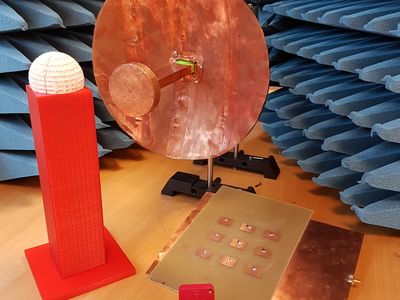The course includes a review of the main parameters that describe antennas. It continues with the mathematical description and experimental demonstration of the operation of the most commercially employed antennas. The list of antennas studied in the course includes classical and modern antennas:
- Dipole antennas.
- Loop antennas.
- Aperture antennas.
- Horn antennas.
- Arrays.
- Reflector antennas.
- Lens antennas.
- Leaky wave antennas.
- Frequency independent antennas.
- Periodic structures.
- Antennas based on gap waveguide technology.
This course includes a modern view of the physical operation of antennas.
